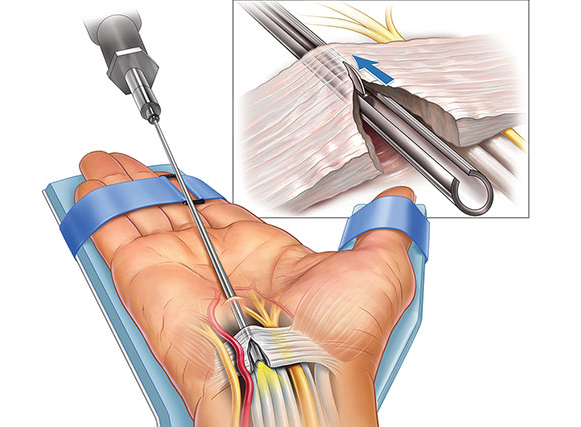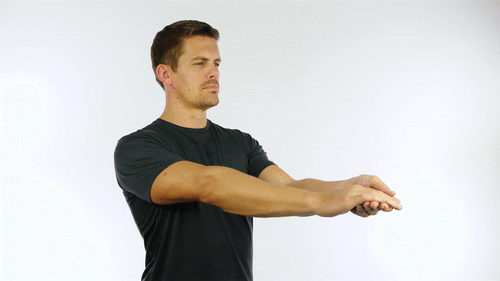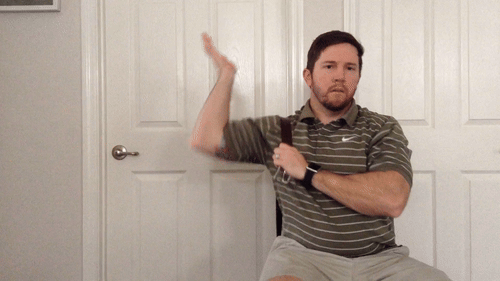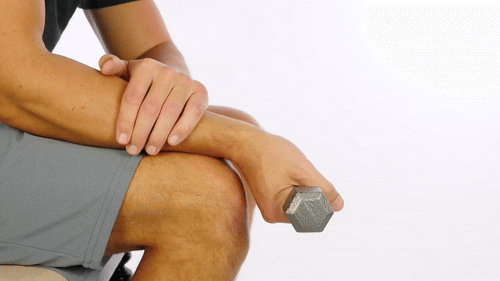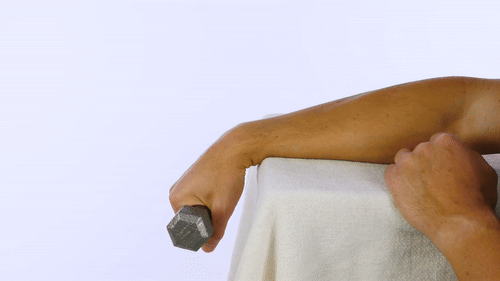Carpal Tunnel Surgery: What it Involves, What Rehab Looks Like
Being told you need surgery for Carpal Tunnel Syndrome-whether right after a diagnosis or years of pain and discomfort can be daunting. Even a remote possibility of going under the knife comes with some tough questions: Is it worth it in the long run? Is it safe?.
Well, the great news is that it's not a lost cause, if you get the right care. In fact, studies show a 90% success rate for patients after Carpal Tunnel release surgery. The idea might be scary, but there's definitely a lot of light at the end of the tunnel.
This article will cover the key things you need to know about Carpal Tunnel Syndrome(CTS)surgery in light of what it's all about, what to expect in the long run, and what you can do to get the most out of the recovery process. Let's get started.
A Quick Recap: Nature, Treatment, and life after Surgery
Carpal Tunnel syndrome occurs when the Median Nerve gets pinched/compressed and irritated inside a space on the palm side of your wrist, known as the Carpal Tunnel.
This space is formed by a series of small bones at the base, known as Carpal bones, and a prominent ligament on top, known as the Transverse Carpal Ligament. It's basically a passage for the Median nerve and 9 tendons from forearm muscles which move the hand in various ways.
The main cause of Carpal Tunnel Syndrome is increased pressure within this space due to a variety of factors such as:
Inflamed and swollen tendons due to trauma i.e typing, machine work, sports.
Obesity.
Fluid retention and accumulation i.e during pregnancy.
Irritation and inflammation of the median nerve.
Growths i.e ganglion, tumours.
Joint and soft tissue inflammation caused by autoimmune disorders.
Key signs and symptoms of Carpal Tunnel Syndrome include tingling, numbness, pain and muscle weakness along distribution of the Median nerve in the hand.
Carpal Tunnel Syndrome Treatment overview
There are two main treatment approaches for Carpal Tunnel Syndrome:
Conservative Treatment
This involves non-invasive methods to alleviate pressure inside the carpal tunnel and improve associated symptoms. Physiotherapy techniques and medication play a critical role here:
Medication: Over-the-counter medication i.e Ibuprofen and Naproxen are commonly used as first-line treatment in medical circles. When these hardly make any difference, prescription medication like Corticosteroids(i.e pills and injections) are used to counter inflammation and pain. Vitamins(B6) may also be prescribed to improve nerve health.
Physiotherapy: Mainly involves the use of various forms of manual techniques, targeted exercises, and assistive devices to reduce symptoms and promote function.
Surgery
Surgery is typically used as a last resort, when all attempts of conservative management prove unfruitful.
There are two main forms of surgery for Carpal Tunnel Syndrome. All of them primarily aim at relieving pressure on the nerve by cutting the Transverse Carpal Ligament.
Open Carpal Tunnel Release: A vertical incision/cut is made along the wrist under anaesthesia, to gain access to the TCL.The ligament is cut, then everything sutured back together, followed by a post-operative rehabilitation program.
Endoscopic Release: This is about achieving minimal damage to soft tissue structures for an easier and shorter healing process. A tiny camera is attached to a display unit, and a special surgical instrument is inserted into the affected wrist. The camera guides the surgical instrument, which cuts the TCL to reduce pressure within the Carpal Tunnel.
After Surgery
Surgery is only the beginning of recovery for Carpal Tunnel Syndrome. You may need +6 weeks to recover depending on a number of factors. Here is a quick recap of the rehabilitation phases following the procedure:
Week 1-2
Focuses on protecting and optimizing the healing process. Key interventions include:
Splinting: A specially designed splint is issued to keep the wrist in an optimal position for proper healing of soft tissue structures.
Early movement: Simple exercises to maintain finger and arm movements.
Suture management: Involves inspection, and safe removal once the wound heals.
2-6 Weeks
Focuses on early Mobilization and Scar Management
Massage and other complementary interventions to ensure proper scarring. Hard, malformed scars can cause movement issues to surrounding structures within the carpal tunnel.
Strengthening exercises to enhance forearm and hand muscle performance. These are done with a lot of caution to avoid disruption of the healing process.
Gradual return to daily activities as far as the symptoms allow.
+6 weeks
Focus on improving functional Strength and enhancing return to daily activities
Advanced strengthening exercises.
Strategic return to normal duties based on your needs.
Best Exercises for Building Strength and Function After Carpal Tunnel Surgery.
These exercises shouldn't be a substitute for professional advice and direction by any means. It's always prudent to consult your physiotherapist to keep things safe and effective. Exercise programs should be individualized based on a variety of factors. However, the moves below can serve as options for building on what you already have.
1. Wrist Flexors and Median Nerve stretch
Aim: To stretch the median Nerve and forearm flexors(muscles which curl your fingers and bend the wrist in the direction of your palm)
How to do it
Stand up tall, feet at shoulder width.
Raise your affected arm to shoulder level. Make sure it's fully extended on the elbow, palm facing upwards.
Place the unaffected hand on the affected palm.
Using the unaffected hand, bend the palm downwards, making sure your fingers stay extended. You should feel a gentle stretch along the palm side of the affected wrist and forearm at this point.
Hold for 15-20 seconds, release and repeat (2-3 times).
2. Medium nerve gliding exercises
Aim: This exercise glides/moves your median nerve along its course through the carpal tunnel, hand and forearm. This helps with reducing or preventing development of adhesions and restoring normal nerve properties.
How to do it
Starting Position
Sit down on a chair, stool, or bench.
Raise your affected arm on the side to shoulder level, palm facing upwards.
Using the unaffected hand, hold the opposite shoulder down.
Bend the elbow to around 90 degrees, raising your forearm hand further upwards. Your palm should still be facing upwards at this point, like you're carrying a tray.
The movement
Extend the elbow while bending your wrist upwards. Your fingers should be pointing straight up at the end of this movement.
Hold for 1 second, and return to the starting position.
Repeat the movement, 5-10 times.
Note:
Pay attention to your body. Watch out for escalating pain or numbness. Stop the exercise if it triggers symptoms of CTS.
Don't overdo it. 5-10 reps should be enough. Overstretching the nerve can easily irritate it.
3. Wrist Curls
Aim: Building strength in your wrist flexors, which also enhances general grip strength.
How to do it
Starting Position
Hold a light dumbbell in the affected arm, and sit down on a bench or chair.
Lean forward on your thighs using both elbows, both palms facing upwards. Make sure you lean forward enough that both hands hang free over your knees(the affected side still holding the Dumbbell).
Use your free hand to hold the affected side's forearm. This secures the arm for stable movement.
The Movement
With control, curl your wrist upwards, to around 90 degrees of wrist flexion(bending).
Return to the starting position.
Repeat the movement for another rep. Start with 10 reps of 3-4 sets.
Notes:
Upgrade to a heavier Dumbbell once you've mastered the form.
Pay attention to your wrists reaction. Start with a lower number of reps or downgrade the weight if it's causing pain or numbness.
Alternatively, you can use exercise bands if Dumbbells aren't available.
The position and movement remains the same, except that you hold a tight exercise band secured by the foot at the base.
4. Reverse Wrist Curls/ Wrist Extensions
Aim: Build strength in your Wrist extensors.
How to do it
Starting position
Same position as above(wrist curls), except you turn the exercising hand downwards, palm facing the floor.
The movement
Curl your wrist upwards, as high as you can.
Return to the starting position.
Again, alternatively, use exercise bands if Dumbbells aren't available. The position remains intact except you hold an exercise band that's secured to the floor using the foot on the same side.
5. Tennis Ball Squeezes
Aim: To enhance general grip strength in cases of marked weakness.
How to do it
Hold a Tennis ball in the affected hand.
Squeeze as hard as you can.
Release.
Repeat for 10-20 times, 3-4 sets.
Get in Touch with Us
Are you struggling with Carpal Tunnel Syndrome? or simply looking to optimize your healing process after surgery?
Look no further, we're here to help you navigate your recovery journey with confidence, efficiency and safety. Our qualified physios bring years of professional experience and expertise helping people like you. Get in touch with us today, give us a call or feel in the form below. We're looking forward to having you on board.






